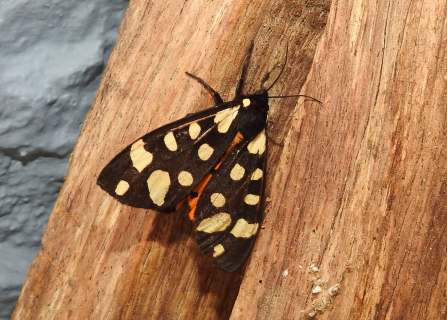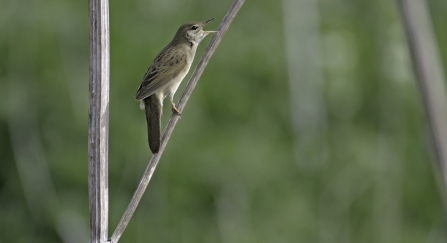What is going on? The other week it was zebras on the island and now there are tigers! This time it’s a large strikingly bold coloured Cream-spot Tiger moth.
They mainly fly at night but sometimes if disturbed or newly emerged you can get lucky and spot them during the day. They might look flashy but those bright colours tell predators to ‘keep away’ as I might be ‘grrrrr’ deadly.



